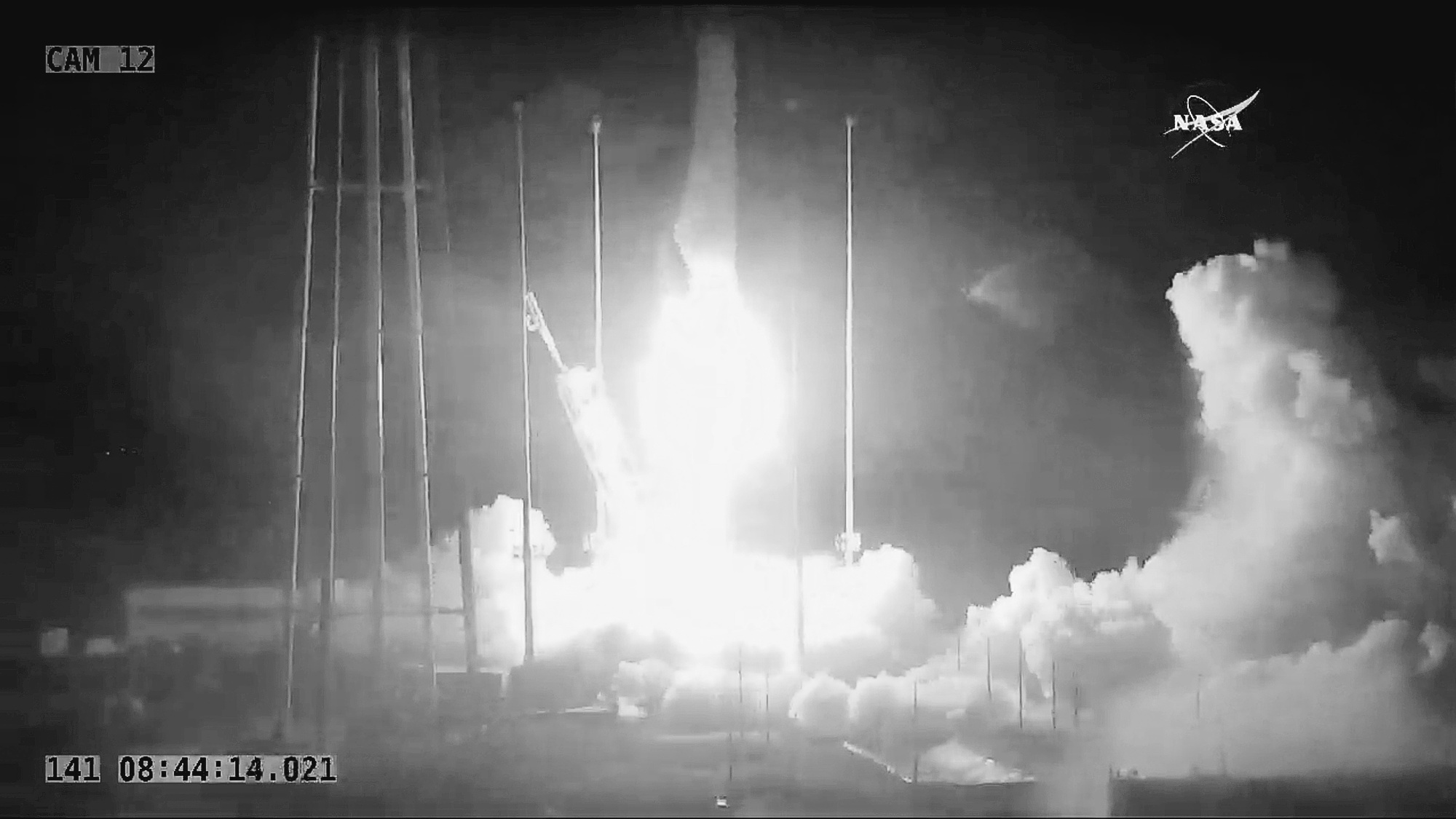
By MARCIA DUNN
AP Aerospace Writer
CAPE CANAVERAL, Fla. (AP) — One of NASA’s prime shippers, Orbital ATK, launched a fresh load of supplies to the International Space Station from Virginia on Monday. The Antares rocket blasted off from Wallops Island before dawn, treating early risers along the East Coast to a cosmic light show, at least where skies were clear. The area of visibility stretched from New England to the Carolinas, and as far inland as Pittsburgh and Charlotte. The 7,400-pound shipment — a third of it research — should reach the orbiting lab Thursday. A flight controller wished the Cygnus capsule “a smooth trip” on the rest of its journey.
“Very exciting morning. Earth’s newest spacecraft launched this morning in a column of fire and roar,” NASA’s space program manager, Kirk Shireman, said from Houston. The Cygnus holds a student cement-mixing experiment, as well as an atom-cooling chamber from NASA’s Jet Propulsion Laboratory that uses lasers to get temperatures colder than even space itself. There’s also equipment for a spacewalk next month, as well as computers and groceries for the six station astronauts. Named for the swan constellation, the Cygnus is making Orbital ATK’s ninth contracted delivery for NASA. SpaceX is NASA’s other supplier.
This particular Cygnus is called the S.S. J.R. Thompson in honor of the former NASA and Orbital ATK executive, who died in November. Launch controllers wore dark suits, white shirts and red ties in memory of Thompson, who dressed that way on the job. The space station is currently home to three Americans, two Russians and one Japanese. Three of them will return to Earth at the beginning of June, followed by the launch of three new crew members from Kazakhstan.



















